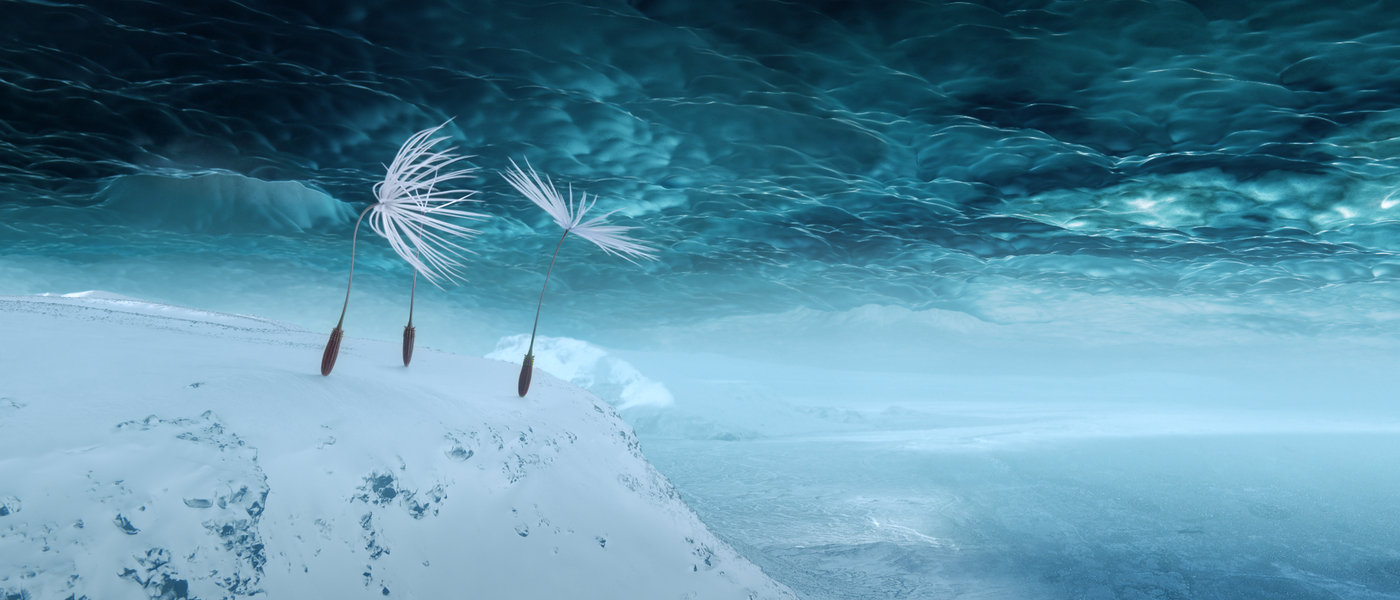Interview with Momoko Seto, Dandelion's Odyssey director
By Perrine Quennesson

By Perrine Quennesson
Recipient of the coveted CNRS Crystal Award - which recognises “those who, alongside researchers, contribute to the advancement of knowledge and the excellence of French research” - Momoko Seto gracefully navigates between cinematic creation, technical experimentation, and scientific curiosity. Since her first short film Planet A, in 2008, she has disrupted scale and time in nature to show what is invisible to the naked eye, sharpening our perception in the process. With her debut feature, she invents a world that stems from our own, as surprising as it is moving, as unsettling as it is familiar. Welcome to her planet.
Interview with Momoko Seto
What strikes us immediately in Planets, is that “nature stop-motion” technique. Can you explain how you achieved it technically?
To create each image in Planets, I use a variety of techniques ranging from time-lapse and hyper slow motion, to ultra-macro, stackshot, and robotics. Time-lapse is, precisely, the art of compressing time. It involves filming a very slow natural phenomenon, often imperceptible to the naked eye, over a given period. Speeding up the footage, we can “finally” see the invisible. Hyper slow motion, on the other hand, is the art of unfolding time. Like time lapse, the (phantom) camera captures very rapid movements and breaks them down. The subject filmed thus becomes “something else”. Here, technique is not just a tool to enhance what we see, it reveals what lies on the other side of the visible world. In an orangery set up inside the Château de Rambuteau in Burgundy, we built a time-lapse studio with 17 cameras shooting simultaneously over 9 months, capturing 20 models, each adorned with different staged plants. For a single shot, a time-lapse could take between 5 and 30 days.
Planets is in keeping with your previous short films, Planet A, Planet Z, Planet Σ, and your VR work Planet ∞. How did the idea of making this series of short films, and later the feature film, come about?
PLANET A, the first planet in my constellation, was a graduation film at Le Fresnoy. I came up with the idea to build a whole world with the salt crystals I was cultivating. It was my first time pairing this time-lapse technique with a natural phenomenon. After Le Fresnoy, I wanted to pursue these experimentations and shine a light on other tiny actors of the natural world. The idea for the feature film format came when I wanted to introduce characters and a story that would reach a wider audience within the PLANETS universe. Along with Alain Leyrac, my co-screenwriter, we set about “fictionalising” nature.
How did you approach storytelling or “fictionalisation”, given that - at first glance - it doesn’t seem easy to make 4 dandelion achenes so endearing?
Emotion is truly the key. It was essential that the 4 achenes convey their emotions in every situation. To achieve this, the first stage was meticulous screenwriting to allow them to express fear, joy, and sadness. The second phase was the animation work, with the Belgian team, orchestrated by the head animator Guionne Leroy. We worked on every minute detail that will help convey these emotions: hair-like dandelion clocks wilting, variations in leaps, the more or less lively movements of the body, etc. I don’t believe eyes or a mouth are necessary to express an emotion, it can be conveyed through gestures, micromovements, and stillness, like in dance or mime. Bringing life into seemingly faceless things is rooted in animist culture, where the soul is everywhere and everything is connected to the self.
What brought you to make a silent film?
Since the achenes’ “gestures” are expressive enough, it was obvious to me that we didn’t need words commenting on what we already understand. Besides, I find adding human words on dandelion clocks such as “oh look, there’s a slug!” a bit kitschy. It makes the film feel somewhat childish, and this film is meant for a larger audience than young people. I believe non-verbal expression is richer, more nuanced, and sharper than verbal descriptions. I wanted to give the achenes that range of nuanced expression.
What do you hope the public takes away from Planets as they leave the screening, beyond knowing what an achene is?
That nature is not a backdrop to be trampled, that it is not separate from the self, that all the little things that surround us are the actors of an action film, that a growing plant is so beautiful that it can make you cry. We are all a force of nature, bound to one another, and together we make up our planet.